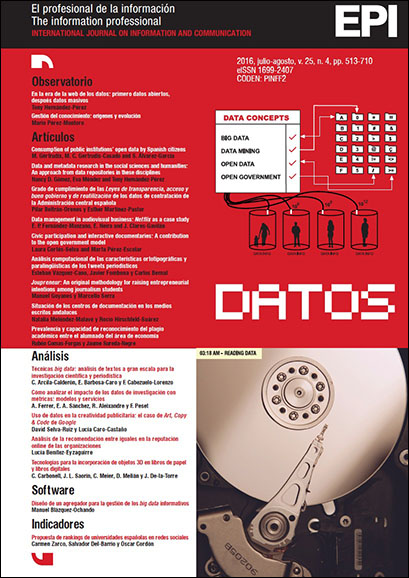Technologies for incorporating 3D objects in paper and digital books
DOI:
https://doi.org/10.3145/epi.2016.jul.16Keywords:
QR codes, Digital book, Three-dimensional models, 3D, Pop-up, Paper toy, Augmented reality.Abstract
Traditionally, the book uses text, pictures, and drawings to show information. To complement the information, various methods have been used, such as adding tangible objects or models. With the advent of digital books, it is possible to incorporate videos, interactive graphics, photo galleries, and 3D objects. This article describes the possibilities of including 3D models in books that are paper or electronic (read on a desktop or mobile device). For this article we have made several book prototypes in various formats, and instructions are presented so that the reader can visualize the 3D objects contained in them.Downloads
Downloads
Published
How to Cite
Issue
Section
License
Dissemination conditions of the articles once they are published
Authors can freely disseminate their articles on websites, social networks and repositories
However, the following conditions must be respected:
- Only the editorial version should be made public. Please do not publish preprints, postprints or proofs.
- Along with this copy, a specific mention of the publication in which the text has appeared must be included, also adding a clickable link to the URL: http://www.profesionaldelainformacion.com
- Only the final editorial version should be made public. Please do not publish preprints, postprints or proofs.
- Along with that copy, a specific mention of the publication in which the text has appeared must be included, also adding a clickable link to the URL: http://revista.profesionaldelainformacion.com
Profesional de la información journal offers the articles in open access with a Creative Commons BY license.




